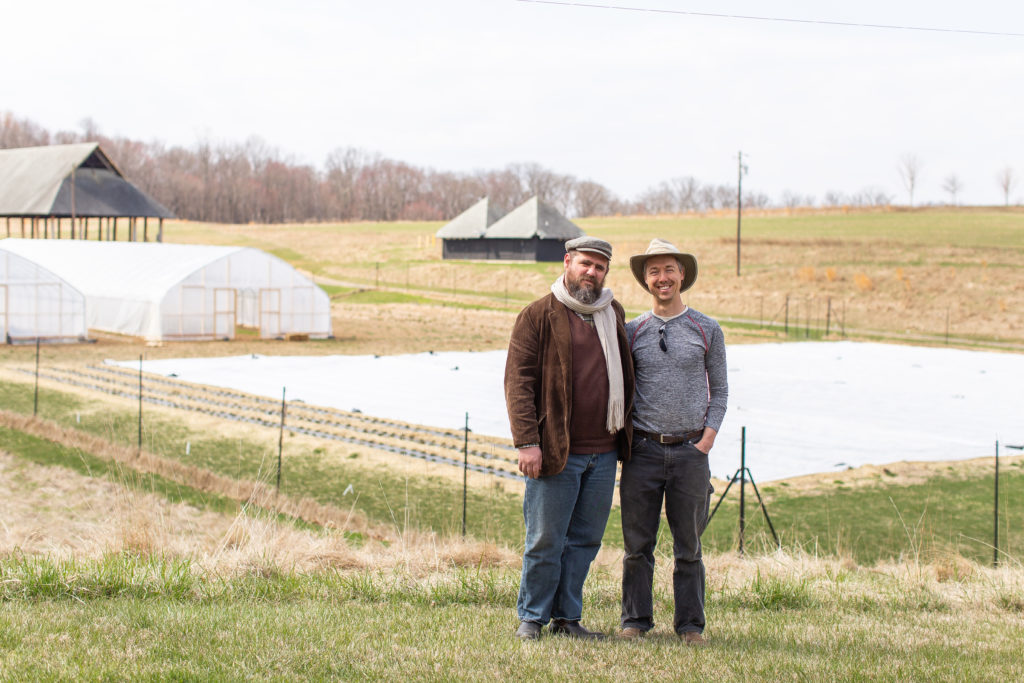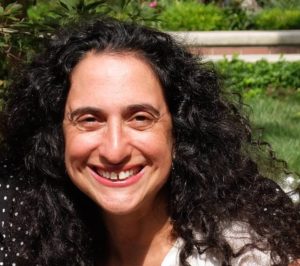
“Not a week in my life has gone by where I didn’t look forward to having Shabbat as a day of rest, and not a year has gone by where I wasn’t excited for shmita as a time of rejuvenation.”
So says Rabbi Psachyah Lichtenstein, director of education at the Pearlstone Center, a Jewish retreat center and outdoor education site in Reisterstown and an agency of The Associated: Jewish Federation of Baltimore. In August, Pearlstone merged with Hazon: the Jewish Lab for Sustainability, a national Jewish environmental organization.
According to Jewish tradition, the land is left fallow during shmita, or the seventh of the seven-year agricultural cycle as described in the Torah. In modern times, shmita — which began this Rosh Hashanah — extends beyond the land to people.

“It’s a year of social involvement, spiritual and ethical renewal and deep environmental reflection,” said Eve Wachhaus, Pearlstone’s chief operating officer.
[With merger, Baltimore is set to become a center of Jewish environmental work]
During the past seven-year cycle, Pearlstone staff prepared the center for 5782 by planting perennials that require little maintenance, including 130 chestnut and pawpaw trees whose fruit will purify the air and water and sequester carbon in the soil.
“We’re setting the table, so to speak, so that we can focus on other things besides growing and harvesting,” said Greg Strella, Pearlstone’s director of stewardship.
Shmita offers a chance to foster health and equity. In coming months, Pearlstone will hold shmita-related programming, including a retreat and special nature walks. Staff will get seven extra days of paid leave — time for themselves as well as for days of community service with local organizations like the Student Support Network, the Black Yield Institute and the Baltimore American Indian Center.
Already, such partnerships have allowed Pearlstone to donate 115,000 meals to students and families in need in both the city and county since the start of COVID-19. Indeed, the Book of Exodus mentions that in keeping with the sabbatical year, “the needy among you will be able to eat just as you do.”

Given the systemic inequities that the pandemic has both laid bare and amplified, there is a real need for shmita this year.
“The demand for constant production is the cause of a lot of injustice, environmental degradation and personal trauma,” Lichtenstein said. “Shmita is a healing of that, not just a time to reflect.”
Strella said that while the earth largely takes care of itself, humankind often gets in the way with harmful “hustle and bustle,” which manifests in how homes, roads, schools and businesses are built.
“The inequities in our culture and the challenges that our earth faces are rooted in a very similar place,” Strella said. “We forget that almost everything we need to survive is done for us — your breath, the water that you drink and the food that you eat. Growing our ability to pause and appreciate what’s around us is absolutely medicine.”
For example, in 2017, Pearlstone began converting 45 acres of grassland from lawn to meadow, “letting it rest,” Strella said. This process involved controlled burns, including one this March, and has produced an ecosystem for a variety of species, from wildflowers and native grasses to deer and monarch butterflies. According to Strella, people coming to Pearlstone for professional conferences, spiritual retreats and lifecycle events can hear the land “literally singing.”
“Within one shmita cycle, we can already see how much more vibrant this land is — how many more beings can live here and thrive together,” he said.
Shmita’s emphasis on slowing down can seem at odds with the urgency demanded by environmental issues.
Yet “for us to talk about the climate crisis,” Wachhaus said, “we need to get to know the soil under our feet.”
Strella noted that letting go with intentionality can be part of the solution, citing how pandemic lockdowns dramati cally improved air quality in many cities worldwide. Humans are outpacing the earth’s ability to repurify itself, but this is only temporary, he said.
“What at first seems like a paradox is precisely the wisdom that shmita’s pointing to,” he said. “By doing less, you will create space and conditions that all the other beings in your community will use to create healthier soil, air and water and more abundance for everybody.”
People don’t have to feel helpless in the face of global warming, Strella said, because shmita shows us that the path forward is already here.
“Taking time now during this year is going to deeply inform how we as individuals and as a collective staff at Pearlstone live out our mission for the next six years,” he said.
Pearlstone staff aren’t the only ones in the area thinking about shmita. Last month, Hinenu: The Baltimore Justice Shtiebl led a workshop about how shmita relates to body positivity — “letting things go wild” and “seeing what might happen if we refrain from viewing our bodies as objects to be cultivated,” said Rabbi Minna Bromberg, founder and president of Fat Torah, who co-hosted the event.
Additionally, The Tasman Center for Jewish Creativity, which was founded by Washington, D.C.-based Rabbi Sarah Tasman and specializes in Jewish mindfulness and creative expression, partnered with Hazon to create resources exploring core ideas of shmita, including creativity without productivity.







